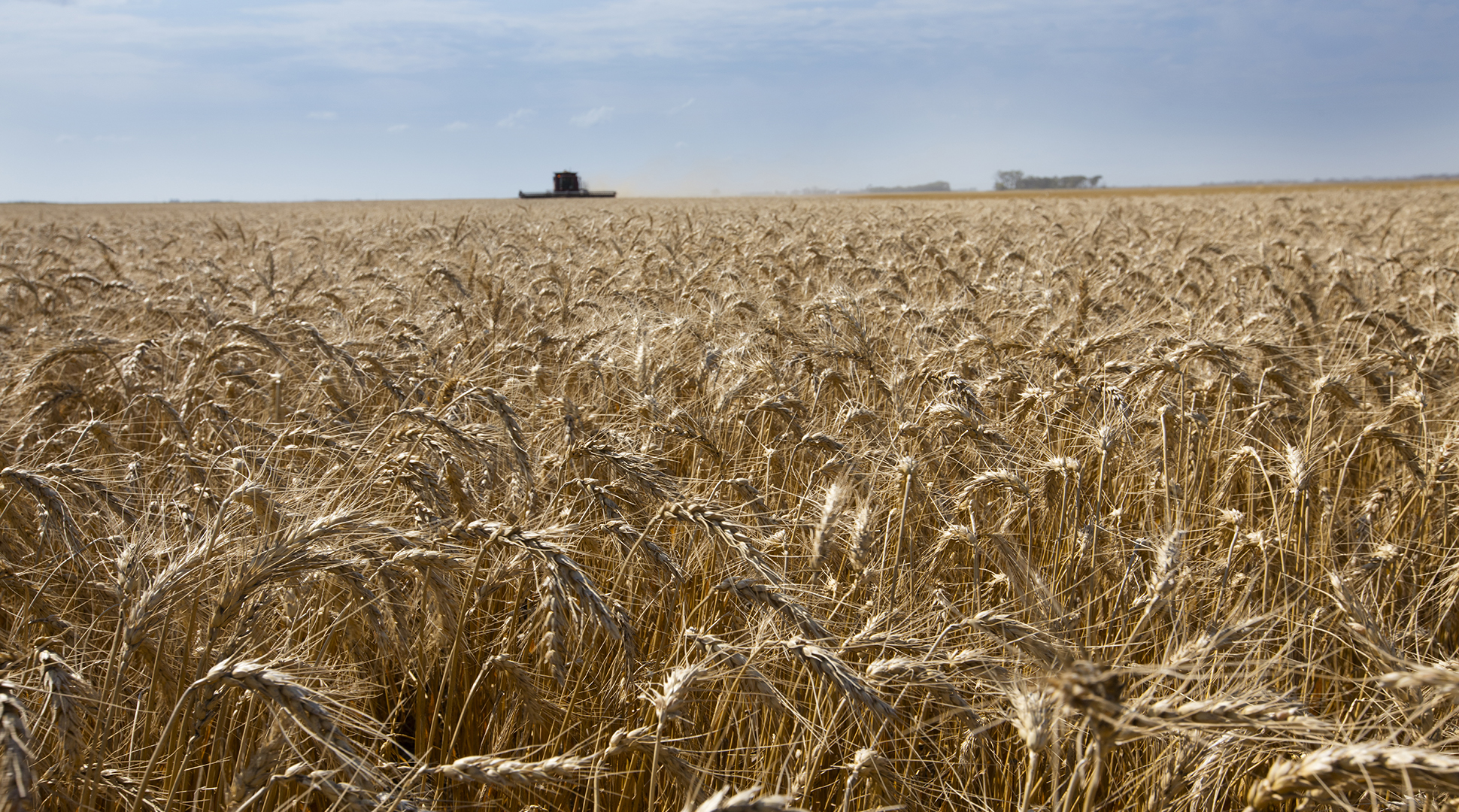Our farmers and ranchers want to help people understand farming and ranching practices. That's why we encourage people to ask their questions about why farmers and ranchers do what they do through Ask a Farmer. Just send your questions to onyourtable@ndfb.org, and we forward your question to our farmers and ranchers for a response.
We recently received a question from Bernadette asking: Do wheat farmers still use Roundup to desiccate the wheat before harvest? If so, how do they justify such a practice?
Sarah, a farmer, agronomist and mother, answered Bernadette's question. Here is her response:
It is legal to use Roundup for a pre-harvest aid. According to the particular label that I read, it isn’t necessarily for desiccation, but rather weed control. If weeds in a particular field could cause an issue for harvest, Roundup may be applied to dry them down prior to harvest. In the process, the Roundup will be applied to the crop and it will kill the crop as well.
The label mandates the timing of the application by the crop stage and also outlines the pre-harvest intervals (PHI). The label is the law and all pesticides must be used in accordance with the label or there are legal consequences. The purpose of the PHI is to allow for an interval of time between the herbicide application and harvest to give the plant time to metabolize the herbicide. This way the harvested grain does not have unsafe herbicide residues when the grain is consumed. The particular formulation label that I’m looking at mandates a maximum rates as well as PHI – a maximum of 22 oz. per acre with a 7 day PHI.
It seems like pre-harvest applications of Roundup on wheat seem to be decreasing (at least in my area). Over the years, many fields have fewer weed issues and the weed management systems are better so we don’t have the weed issues in wheat like we used to. However, every now and again this herbicide does get used for this purpose.
Please keep in mind that glyphosate has a relatively low LD50 or median lethal dose (the amount of a substance it takes to kill half a population). The LD50 is used to describe the relative toxicity levels of many kinds of substances so we can understand how they relate to each other. Every substance has an LD50, even water. LD50 is described in mg/kg and the lower the number mg/kg, the more toxic the substance. This table compares the LD50 of glyphosate and many other substances: https://pesticidesinperspective.org.uk/media/1037/glyphosate-toxicity-table.pdf
You may find it interesting that glyphosate kills plants by inhibiting amino acid synthesis. Glyphosate inhibits the EPSP synthase enzyme and therefore the plant can’t make critical amino acids and the plant dies. Humans and animals do not have this enzyme which is why glyphosate’s relative toxicity is so low for us. Even though the relative toxicity is fairly low for humans, it’s important to remember that it is still a pesticide and should always be handled with respect.
On a personal note, I am a farmer of wheat and I’m also the agronomist for our farm. I make all the pesticide applications decisions for my farm. I take all of the pesticide application decisions for our farm very seriously. The above comments show you some of the things I consider with each and every application.
For more questions and answers, go to our Ask a Farmer page.
